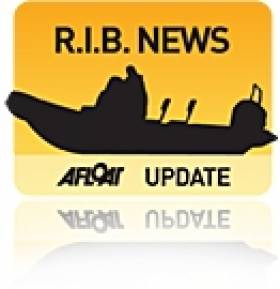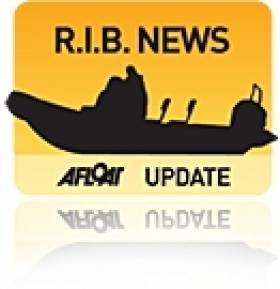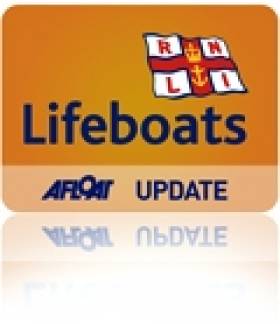Displaying items by tag: Rigid Inflatable Boat
Massive Irish 16-Metre RIB Nears Completion at Red Bay
#RIBS–Antrim's Red Bay Boats are building a 16-metre RIB and the new model to the Red Bay range will have a number of commercial applications. The Northern Ireland boat firm is operating at full capacity with commercial orders this month, a tonic for these times, and the firm headed by Tom McLaughlin, will be exhibiting a full range at the UK Seaworks Boat Show in late May.
With the hull mold of the the new 16-metre craft completed, the first Redbay Stormforce 1650 is underway! The boat is going to be built as a Pilot Boat and will be used for demo's and will be on display at the upcoming boat shows.
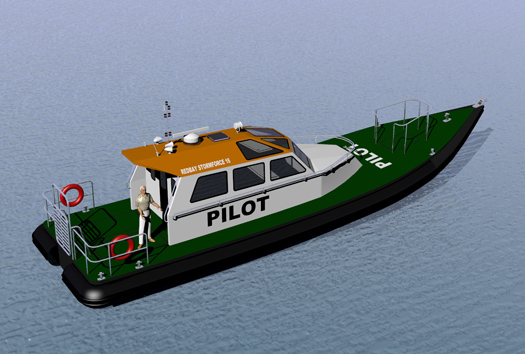
The impressive 16m design is now under construction at Cushendall in County Antrim
The photos below show the first hull being laid with fibreglass. Beside the hull mold is the plug for the deck mold and the cabin mold which are still being made.
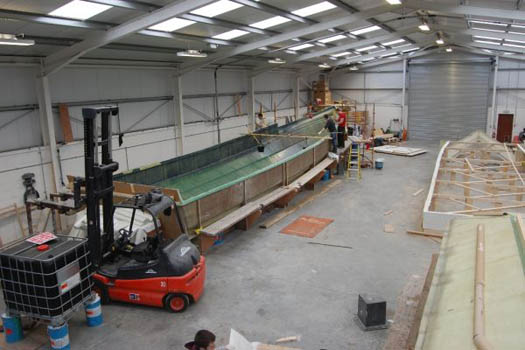
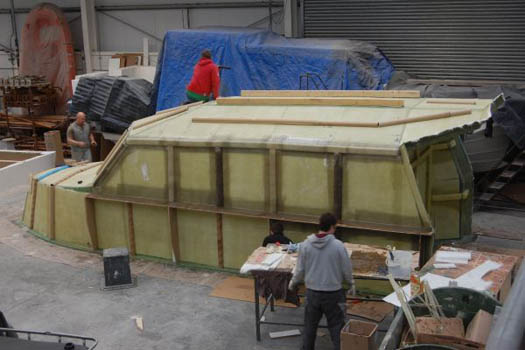
Power for the monster hull is coming from twin Volvo Penta D9 500hp engines coupled to ZF gearboxes with shafts and rudders. It is clearly a boat that will interest port companies in this country and around the world.
Details of 8th Annual Rib Run Unveiled
Details of the eighth annual Rib Run from Cork to Wales were announced on Thursday.
The event will see 15 rigid inflatable boats (ribs) set off from Kinsale on 5 May following a 400-nautical-mile route to Aberystwyth.
The Irish Examiner reports that in previous years the Rib Run has raised more than €260,000 for RNLI lifeboats and the south coast trawler tragedy appeal.
According to event chairman David O'Leary, all crews taking part pay their own expenses which ensures that all money raised goes to charity.
For more details visit www.kinsaleribrun.org
Five Incidents in Four Days for Cork Harbour Lifeboat
Crosshaven Volunteer RNLI Lifeboat has had a very busy few days as they were tasked to five incidents in four days.
On Thursday evening at 17.59, the Lifeboat was tasked to the upper reaches of Cork Harbour near the city to check out an unidentifiable object in the water. On arrival, the object was found to be a large bag containing foam. Friday evening, saw the Lifeboat heading up the Owenabue River to rescue two punts which had been floated off on the very high Spring tides and were perceived a danger to shipping.
Saturday evening at 20.34, the Lifeboat was again tasked to the North side of Great Island where a 55' Motor Launch with 3 persons on board had mechanical difficulties and drifting in high winds of force 7. On arrival at scene, the crew decided that because of the size and weight of the vessel and the high winds it was safer to anchor the vessel and take off the crew. They were safely landed at East Ferry Pier. As the Lifeboat was returning to Crosshaven, The Coastguard at Valentia again tasked the Lifeboat to search the area between Cobh and Monkstown for an overdue Rigid Inflatable Boat (RIB). After searching for a period, and with nothing found, the Coastguard stood down the volunteer Lifeboat crew to return to station.
Sunday afternoon, and the pagers were again activated at 16.33 to go to the aid of a small boat with engine problems at East Ferry. On arrival in the area, it was noticed that the casualty boat had managed to restart and head into East Ferry Marina.
Related Safety posts
RNLI Lifeboats in Ireland
Safety News
Rescue News from RNLI Lifeboats in Ireland
Coast Guard News from Ireland
Water Safety News from Ireland
Marine Casualty Investigation Board News
Marine Warnings

